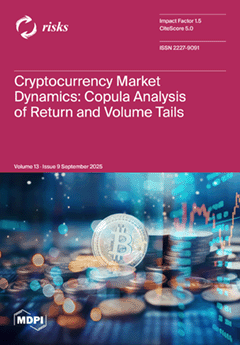The global aviation sector underwent an unprecedented shock due to the COVID-19 pandemic, severely disrupting the passenger flows, flight operations, and revenues of Polish airports. In response, the government launched protective measures under the Anti-Crisis Shield and the COVID-19 Counteraction Fund. This study
[...] Read more.
The global aviation sector underwent an unprecedented shock due to the COVID-19 pandemic, severely disrupting the passenger flows, flight operations, and revenues of Polish airports. In response, the government launched protective measures under the Anti-Crisis Shield and the COVID-19 Counteraction Fund. This study examines the financial impact of such public support on 12 Polish airports between 2016 and 2022, applying a two-step cointegration ECM framework with Driscoll–Kraay inference. Profitability (ROA, ROE, OM), liquidity, debt, and operational activity indicators were analysed, with particular attention to methodological distortions arising from including subsidies in operating revenues. The results indicate a material decline in profitability from 2020 to 2022, albeit with pronounced heterogeneity across airports. Larger hubs (Warsaw–Chopin, Kraków, Gdansk, Katowice, Poznan, and Wroclaw) demonstrated relative resilience, while many smaller, regionally owned airports (e.g., Bydgoszcz, Lodz, Lublin, Olsztyn-Mazury, Zielona Gora) remained structurally unprofitable despite substantial subsidies. In several cases, profitability, liquidity, and operating activity recovered by 2021–2022, yet the improvement was not uniform: for fiscally dependent airports, transfers merely masked persistent inefficiencies. Passenger volumes, flight operations, and employment emerged as the primary performance drivers, while capital expenditure, turnover of current assets, and liquidity were particularly relevant for ROE. The novelty of this research lies in disentangling the stabilising effect of subsidies from underlying profitability, revealing how non-market revenues distort standard performance metrics and accelerate short-run adjustment dynamics once netted out. The findings demonstrate asymmetric impacts of state aid across ownership structures, i.e., central state control at Warsaw versus regional self-government involvement elsewhere, and highlight structural inefficiencies that weaken systemic resilience. These insights underline the importance of subsidy-adjusted financial indicators, more selective allocation of support, and reporting standards that separate operating from non-market revenues to enhance resilience and ensure sustainable airport operations.
Full article





